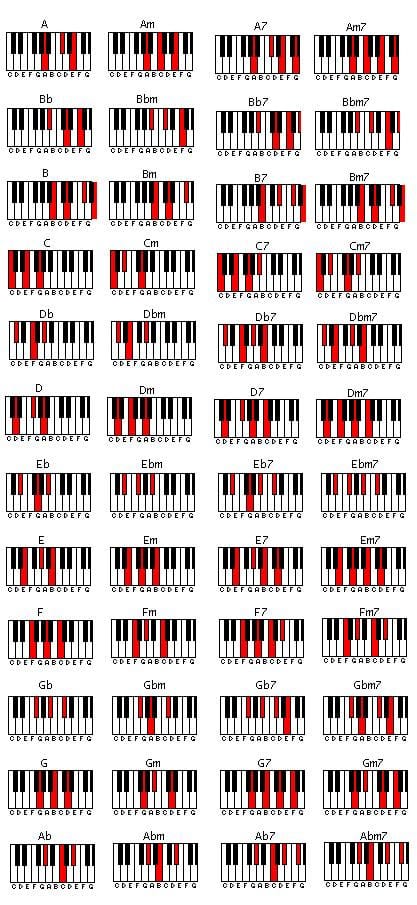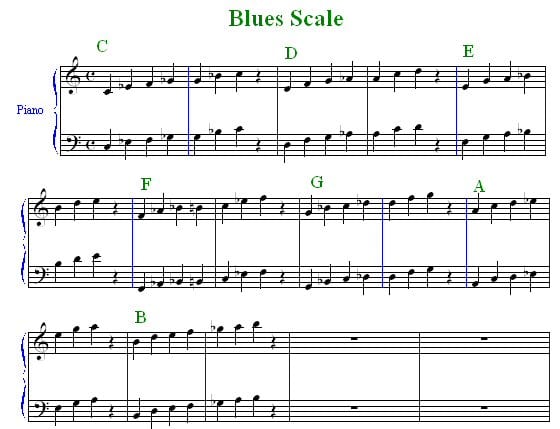Piano music doesn’t have to be all classical, all the time! Here’s what you need to know about getting started with jazz piano chord progressions, courtesy of St. Augustine, FL teacher Heather L...
If you’re interested in learning how to play jazz piano after starting off as a classical pianist, one of the first things you need to master are chord progressions. In this blog post, we’ll take a look at some of the most common jazz piano chord progressions and how you can use them in your own playing
Thelonius Monk, Herbie Hancock, and Duke Ellington are just a few of the great jazz piano players. What beautiful and fascinating sounds fill our ears when their names come to mind! The seemingly illusive progressions and spontaneous elements, like syncopation and improvisation, sound virtually like magic. To those of us who were trained in the classical tradition only, the journey from classical pianist to jazz pianist may seem like a long one. But it’s not be as difficult as it seems. By learning basic blues scales and jazz piano chord progressions, you’ll be taking the first important step in transitioning to jazz piano. Whether you’re just getting started with jazz or you’ve been playing for years, these progressions will help add new life to your music. So let’s get started!
What is the Most Common Chord Progression in Jazz?
The most common chord progression in jazz is the 2-5-1, or II-V-I. Other popular jazz chord progressions include:
- V-I
- ii-V
- ii-V-I
- Secondary Dominant
- Tritone Substitution
- I-IV
- IV-iv
Whether you are brand new to playing the piano or have been playing classical piano for a while and want to transition to jazz, mastering these chords is essential if you want to become a better player. When you take piano lessons, you’ll learn many of them in your classes.
You’ll also learn the general piano chord basics, like what you’ll see in this video below:
https://www.youtube.com/watch?v=eadBO8ReL1Q
What Are the Jazz Chords on Piano?
Like any other musical genre, jazz has its fair share of cliches and standard repertoire!
If a song is widely played and well-known, it will become what’s called a Jazz Standard, a song that’s built out of commonly used jazz chord progressions. In this post, we’ll tell you about some of the most common jazz chord progressions you’ll see.
For example, the 12 bar blues is used in every single blues song as well as many jazz songs, like “Hit the Road Jack”. The circle of fifths is used in songs like “Fly Me to the Moon” and “Autumn Leaves.”
For those of us who’ve learned Hanon exercises, there’s an excellent resource called “Hanon to Jazz” (published by FJH Music Company Inc.). Specifically written for classically trained players, its fun and brilliant exercises and songs are a terrific introduction. They’ll have you playing the blues in no time. It’s a great map for your journey.
For those of you who’ve yet to learn Hanon exercises, Dariusz Terefenko’s created a great workbook, “Jazz Theory: From Basic to Advanced Study”, published by Routledge. I also recommend Tim Richards’ “Exploring Jazz Piano: Volume 1”, published by Schott.
One of the first stretches of road on your journey is learning jazz piano chord progressions.
What is a 2 5 1 Chord Progression?
The two, five, one, and six (ii-V-I-vi) chord progression, is one of the most famous and useful. An example is:
D minor-G major-C major-A minor
Here’s a video of how to play it:
The one, six, two, five, and one (I-VI-II-V-I) chord progression is another that could be tried with an improvised melody in the right hand. An example of the progression is:
C major-A minor-D minor-G major-C major
Here’s a video of how to play it:
Other Easy Jazz Piano Chord Progressions
Some other jazz piano chord progressions that you’re likely to see in music are as follows:
- V-I (Five-One) – an example of this is G7-C
- ii-V (Two-Five) – an example of this is Dm-G7
- ii-V-I (Two-Five-One) – we told you about this before, but another example is Dm-G7-C
- Secondary Dominant (Five of Five) – like D7-G7-C
- Tritone Substitution (Tritone Sub) – an example is Db7-C
- I-IV (One-Four) – like C-F
- IV-iv (Nostalgia Chord) often played as F-Fm
These foundational jazz chord progressions are found in just about 90% of all jazz songs, meaning it’s important to learn them if you plan on playing or composing any jazz music at all. Practice these progressions regularly and try to think of them in small chunks so you can master the small movements and forms in each key more effectively.
How to Play Jazz Piano Chord Progressions
The key to playing jazz piano chord progression is to practice, practice, practice.
Take a look at the 12 Bar Blues and rhythm changes in the songs you play and you’ll notice that these jazz chord progressions are everywhere.
If your goal is to become a skilled jazz pianist, you should make it your goal to build your practice routine around these jazz piano chord progressions. Once you can recognize them automatically ins songs, it will be way easier to play just about any jazz song you come across, even if you’re sight-reading or improvising.
Don’t be afraid to adjust your practice routine to include more time to work on jazz chord progressions. Ask your teacher about the best ones to learn for the specific songs you’re trying to master – and take time to practice improvising in your daily routine, too!
Learn Jazz Piano Chord Progression With a Helpful Chart
Next, take a look at the chord chart below. It shows which keys to play together to create each chord. It’s fun to mix and match to make sounds that appeal to you.
Jazz Scales to Improve Jazz Piano Chord Progressions
The next stretch of road is paved with learning jazz scales. Here’s a picture of several blues scales:
Jazz Piano Chord Progressions Piano Players Should Know
We’ve given you a crash course in jazz piano chord progressions, now it’s your turn to take this information and put it into practice. Start by practicing the chords and progressions we’ve outlined for you. As with anything else, the more time you spend practicing, the better you will become at playing them.
Once you have these progressions down cold, start incorporating them into your own music. Listen to recordings of some of your favorite jazz artists and try to emulate their sounds using these new chords.
As with the learning of any genre, listening is so utterly important. This is especially true for those of us who are adopting a new style. The best jazz musicians in the world listen to jazz all of the time. Think of yourself as a hungry traveler and that music is your sole nourishment. You won’t get very far without it.
Jazz is all about improvisation so don’t be afraid to experiment! With a little bit of practice and experimentation – and by taking piano lessons from a qualified teacher – you too can sound like a pro jazz pianist
 Heather L. teaches singing, piano, acting, and more in St. Augustine, FL, as well as through online lessons. She is a graduate of the prestigious Westminster Choir College in Princeton, New Jersey, and has performed with the New York and Royal Philharmonics, the New Jersey and Virginia Symphonies, the American Boy Choir, and the internationally renowned opera star Andrea Bocelli. Learn more about Heather here!
Heather L. teaches singing, piano, acting, and more in St. Augustine, FL, as well as through online lessons. She is a graduate of the prestigious Westminster Choir College in Princeton, New Jersey, and has performed with the New York and Royal Philharmonics, the New Jersey and Virginia Symphonies, the American Boy Choir, and the internationally renowned opera star Andrea Bocelli. Learn more about Heather here!Photo by sanbeiji
Suzy S.



